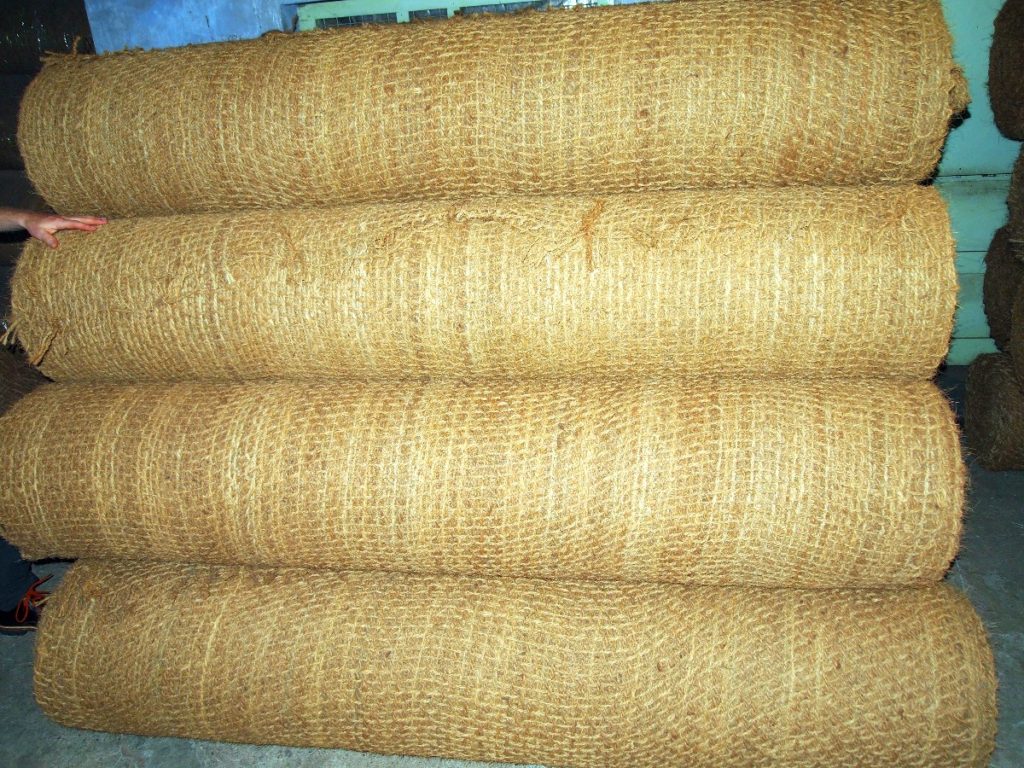
Coir mat, sometimes called an erosion control blanket, is made of coir fibers turned into yarn and then woven together. The resulting spaces between the weave are large enough to allow sunlight to permeate through to the seeds or seedlings, promoting vegetation growth but also helping suppress weed growth and controlling erosion.
Where to Use Coir Erosion Mats
Erosion removes important nutrients from the topsoil that are necessary for successful vegetation growth. It also interferes with plants’ root establishment.
A common place to install erosion mats is in areas where vegetation has difficulty taking hold due to erosion. This might include high-water areas, wetland restorations, or shorelines. Coir mat is also commonly used for erosion control on hillsides. Other erosion-prone areas include arid regions, such as the desert, where high winds move dry dirt and sand from one place to another.
In wet areas, erosion leaves behind gullies in the soil, exposed plant roots, and visible runoff paths where mud has traveled down hillsides, destroying vegetation and soil stability as it goes. In severe cases, it can create mudslides and threaten homes.
How Does Coir Mat Prevent Erosion?
A benefit of using coir mat to prevent erosion is that, over time, it melds into the soil, eventually becoming part of the landscape it holds in place as plant roots become entwined in its mesh and into the soil.
Coir mat’s longevity varies but can last up to three years. These biodegradable erosion mats break down naturally and absorb moisture to promote vegetation growth.
How to Install Erosion Mat
An erosion mat’s success is based partly on proper installation. Dig a trench 6 to 8 inches deep near the top section of the matting, and stake the mat into the trench using wooden stakes or staples, depending on the soil conditions. To maintain eco-friendly erosion prevention, use 100 percent biodegradable wooden stakes or staples, such as those made from cornstarch. If these are not available, you will need to eventually remove the pins or staples.
Once the mat is secure, fill the trench with soil, and fold the excess mat at the top over the dirt. This method will prevent water from becoming trapped beneath the erosion mat and aid in its success preventing erosion. Unroll the mat so it lays flat against the soil, and dig another trench to install the same way near the bottom of the mat. Compact the soil fill down over each trench.
At the surface of the soil, stake pins or staples securely into the coir mat from 15 to 23 inches across the length of the mat and deep enough so they are flush with the soil surface. Be sure to allow for a 6- to 8-inch overlap of erosion mats that are side by side, and secure a series of staples approximately 12 inches apart down the length of the adjoining mats.
After laying coir mat in the erosion-prone areas, check for tears or gaps, and replace those sections for maximum erosion prevention.

Leave a Reply
You must be logged in to post a comment.